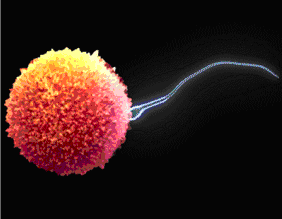As many as one in eight couples of childbearing age will experience infertility. Infertility is a complicated health issue that can result from many different factors, and it often takes some testing to discover the underlying cause or causes.
There are four types of infertility— female factor, male factor, combined factor and unexplained. Let’s take a look at some potential causes of infertility in each of these four categories.
1. Female factor infertility.
- About 30% of infertility cases are due to female factors. These factors can include problems with the reproductive organs, ovulation issues, hormone imbalances or age.
- Endometriosis, fibroids, blocked or damaged Fallopian tubes, or a history of pelvic infections or surgery can all affect a woman’s fertility.
- Ovulation disorders such as polycystic ovarian syndrome (PCOS), irregular periods or no periods are another common cause of female factor infertility. These are often very treatable with lifestyle changes and fertility treatment.
- Advanced maternal age, defined as the late thirties or early forties, increases a woman’s risk of infertility more than any other factor.
- In some cases of infertility, a woman is able to conceive, but unable to carry a healthy fetus to term. This may be due to uterine abnormalities, incompetent cervix, immunological issues, hormone issues, health problems, environmental toxins, infections or other issues. Generally, it is considered recurrent miscarriage if a woman experiences 3 or more first trimester miscarriages in a row.
2. Male factor infertility.
- As many as 30% of infertility cases are caused by male factors. In another 20% to 30% of cases, male factors contribute. Male factors can be productive (linked to the production of sperm) or obstructive (linked to the transport of sperm).
- Sperm production can be hampered by congenital issues, environmental exposures, cancer, hormone imbalance, testicular problems or varicose veins.
- Sometimes sperm production is adequate, but there is an obstructive issue with the tract. This can occur with congenital defects, infection or prior surgery.
3. Combined factor infertility.
- With combined factor infertility, both the male and female have factors contributing to their infertility. For example, he might have a low sperm count and she might have a history of endometriosis.
4. Unexplained infertility.
- In approximately 15% of cases, the cause of the infertility will be unexplained. This means that the couples’ fertility tests came back normal, but they have still been unable to become pregnant after having regular, unprotected intercourse over a reasonable period of time.
- Unexplained fertility may correct itself on its own, but a fertility specialist can still help couples maximize their chances of becoming pregnant.



